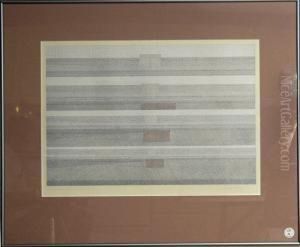John Seller Paintings
John Seller was an eminent English map-maker, instrument maker, and hydrographer to the King, born in 1630. His contributions had a significant impact on the cartography and navigational practices of his time. Seller's career spanned a period when the demand for accurate navigational charts and instruments was growing, fueled by the expansion of trade and the British Empire's maritime aspirations.
Seller's work in cartography and instrument making began in the mid-17th century, a time when England was establishing itself as a major naval power and when there was a burgeoning interest in exploration and navigation. He became a pivotal figure in the advancement of navigational sciences, not only through his maps but also through his innovations in navigational instruments.
In 1671, Seller was appointed Hydrographer to the King, a position that underscored his importance to the English crown and its maritime ventures. This role involved the production and oversight of maps and nautical charts that were crucial for naval and commercial shipping. Seller's appointment was a testament to the accuracy and reliability of his work, at a time when such qualities were critical for safe navigation and successful commerce.
Throughout his career, John Seller published several atlases and nautical charts, which were highly regarded for their detail and precision. Among his notable works was 'The English Pilot,' a maritime atlas that became an essential guide for English navigators. This publication was particularly significant as it marked a shift towards English-produced navigational aids, at a time when England was increasingly reliant on Dutch cartographic resources.
Seller's contributions extended beyond cartography. He was also an innovator in the field of navigational instruments. He worked on the development and improvement of compasses, quadrants, and other devices essential for navigation at sea. His work in this area not only supported England's maritime endeavors but also contributed to the broader field of navigational science.
John Seller's impact on navigation and cartography was profound. Through his maps, atlases, and instruments, he played a crucial role in the development of navigational practices in the 17th century. His legacy continued beyond his death in 1697, with his works and innovations influencing the field of navigation for years to come. Seller's contributions helped lay the foundations for the modern practices of cartography and navigation, securing his place as a pivotal figure in the history of maritime exploration.

